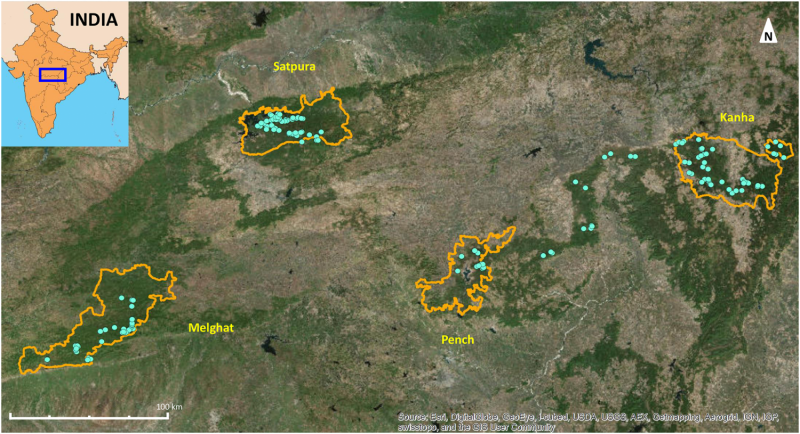Genetically isolated sloth bears rely on habitat corridors to connect populations

Habitat connectivity and corridors may play an important role in maintaining gene flow between isolated sloth bear populations in central India, according to a study published May 6, 2015 in the open-access journal PLOS ONE by Trishna Dutta from Smithsonian Conservation Biology Institute and colleagues.
Sloth bears, Melursus ursinus, are endemic to the Indian subcontinent and due to habitat loss and degradation over the past century, their declining populations now exist only in isolated and fragmented habitats. The authors of this study, interested in understanding the genetic connectivity between these fragmented populations studied sloth bear meta-populations in five tiger reserves in the Satpura-Maikal Landscape of central India. They collected sloth bear scat along forest trails and hair samples from trees with sloth bear claw marks, as well as recorded the GPS location of each collection site to obtain genetic diversity information.
Out of nearly 200 samples, the researchers identified over 50 individuals in this population with moderate genetic variation, subdivided into two genetic clusters. They also found evidence of sloth bears in the corridor between the Kanha and Pench Tiger Reserves, which to the authors suggests that habitat connectivity and corridors play an important role in maintaining gene flow in this population. The authors have identified several threats to the corridors that could potentially sever ongoing gene flow, but suggest development and implementation of conservation policies based on further sloth bear research may aid in protecting these genetically isolated populations.
More information: Dutta T, Sharma S, Maldonado JE, Panwar HS, Seidensticker J (2015) Genetic Variation, Structure, and Gene Flow in a Sloth Bear (Melursus ursinus) Meta-Population in the Satpura-Maikal Landscape of Central India. PLOS ONE 10(5): e0123384. DOI: 10.1371/journal.pone.0123384
Journal information: PLoS ONE
Provided by Public Library of Science


















